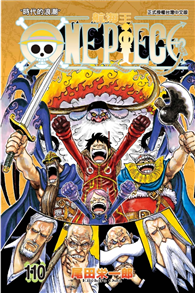The Defenders, comicdom’s No. 1 non-team, are back - and things are about to get weird in all the best ways! As we begin, the Defenders confront Nebulon and the other-dimensional Squadron Sinister. It’s an encounter that will bring Nighthawk into the fold and change the team forever! Magneto and his Ultimate Mutant strike, the Wrecking Crew debuts, Luke Cage and Daredevil join up, and Valkyrie continues the search for answers to her fractured identity! Then, Steve Gerber takes the writing reins, injecting the series with knowing absurdity and cutting social commentary in the form of the bizarre Headmen and the bigoted Sons of the Serpent! Gerber crafted challenging stories that set the tone for the Defenders going forward - and define them even today! Collecting DEFENDERS (1972) #12-25, GIANT-SIZE DEFENDERS #1-4 and MARVEL TWO-IN-ONE (1974) #6-7 - plus material from MYSTERY TALES #21, WORLD OF FANTASY #11 and TALES OF SUSPENSE (1959) #9.
| FindBook |
有 1 項符合
Defenders Epic Collection: Enter - The Headmen的圖書 |
 |
Defenders Epic Collection: Enter - The Headmen 出版社:Marvel Universe 出版日期:2024-06-25 語言:英文 規格:平裝 / 464頁 / 普通級/ 初版 |
| 圖書館借閱 |
| 國家圖書館 | 全國圖書書目資訊網 | 國立公共資訊圖書館 | 電子書服務平台 | MetaCat 跨館整合查詢 |
| 臺北市立圖書館 | 新北市立圖書館 | 基隆市公共圖書館 | 桃園市立圖書館 | 新竹縣公共圖書館 |
| 苗栗縣立圖書館 | 臺中市立圖書館 | 彰化縣公共圖書館 | 南投縣文化局 | 雲林縣公共圖書館 |
| 嘉義縣圖書館 | 臺南市立圖書館 | 高雄市立圖書館 | 屏東縣公共圖書館 | 宜蘭縣公共圖書館 |
| 花蓮縣文化局 | 臺東縣文化處 |
|
|
圖書介紹 - 資料來源:博客來 評分:
圖書名稱:Defenders Epic Collection: Enter - The Headmen
內容簡介
作者簡介
After co-creating DC’s Swamp Thing in 1972, Len Wein moved to Marvel for lengthy runs on some of the company’s biggest titles -- Amazing Spider-Man, Fantastic Four, Incredible Hulk and Thor -- and helped bring the landmark Giant-Size X-Men #1 into the world, changing Marvel forever. Returning to DC as an editor, Wein oversaw an influx of British writing talent, highlighted by Alan Moore’s historic Watchmen miniseries. Wein also has worked in television and animation, returning to his roots to develop a Swamp Thing screenplay. He has written comic-book adaptations of The Simpsons and Futurama.
Steve Gerber (1947-2008) first came to attention writing Defenders, in which he gave the non-team a non-traditional outlook equaled by few. In Adventure of Fear, he introduced Howard the Duck. Gerber’s other 1970s contributions included scripts for Iron Man, Sub-Mariner and more. Elsewhere, he is equally well-remembered for DC’s Phantom Zone, Eclipse’s Destroyer Duck and others. In the 1970s, Tony Isabella wrote for as eclectic a set of characters as can be imagined -- including Black Goliath, Captain America, Champions, Ghost Rider, Astonishing Tales’ It the Living Colossus, Luke Cage Hero for Hire and Marvel Chillers’ Tigra. At DC, he co-created Black Lightning and collaborated with Richard Howell on Shadow War of Hawkman. He wrote Justice Machine for two separate publishers and has announced his intention to write Heroic Publishing’s Tigress. In Comics Buyers Guide, his "Tony’s Tips" column is a regular feature. After a start as inker to his older brother John, Sal Buscema penciled Captain America, Defenders, Incredible Hulk and more. Famed for his ability to meet tight deadlines, he spread his talents across multiple genres. His 1970s work ranged from Ms. Marvel and Nova to Sub-Mariner and Spider-Woman’s first appearance in Marvel Spotlight. He was the uninterrupted artist on Spectacular Spider-Man for more than one hundred issues and penciled the web-slinger’s adventures in Marvel Team-Up, in which he and writer Bill Mantlo introduced Captain Jean DeWolff. After handling more team-ups in the Thing’s Marvel Two-in-One, he reunited with brother John on Steve Englehart’s Fantastic Four. He later provided inks for Tom DeFalco’s Spider-Girl titles and Thunderstrike miniseries. The career of the late Gil Kane began in comicdom’s Golden Age. Following his role in ushering in the Silver Age of Comics via the re-creations of Green Lantern, the Atom and others, he became Marvel’s star cover artist and the regular penciler on Amazing Spider-Man. Kane also helped develop Iron Fist, Morbius the Living Vampire and other Marvel mainstays. In 1971, he published the sword-and-sorcery/science-fiction hybrid Blackmark, often called the first American graphic novel. He was a multiple winner of the National Cartoonist Society Award; in 1997, he was inducted into both the Eisner Award Hall of Fame and the Harvey Award Jack Kirby Hall of Fame. Jim Starlin introduced not only Thanos but also Shang-Chi and many other memorable characters. After seemingly killing both Adam Warlock and Thanos in one of Marvel’s earlier multi-title cosmic arcs -- for which he won two Eagle Awards -- Starlin wrote Marvel’s first graphic novel, The Death of Captain Marvel. Returning to Marvel to write Silver Surfer, he resurrected Adam Warlock and Thanos, both of whom figured prominently in a veritable franchise of miniseries he wrote and/or penciled: Infinity Gauntlet, Infinity War, Infinity Crusade, Infinity Abyss and more, plus the Warlock and the Infinity Watch and Thanos monthlies. Starlin continued to chart the saga of the Mad Titan in a recent series of original graphic novels.
|







![塔木德:猶太人的致富聖經[修訂版]:1000多年來帶領猶太人快速累積財富的神祕經典 塔木德:猶太人的致富聖經[修訂版]:1000多年來帶領猶太人快速累積財富的神祕經典](https://media.taaze.tw/showLargeImage.html?sc=11100697818)



